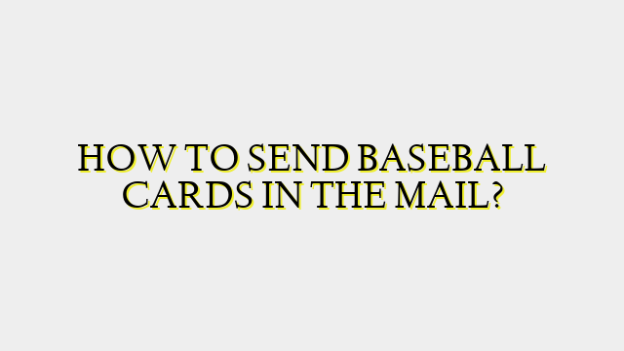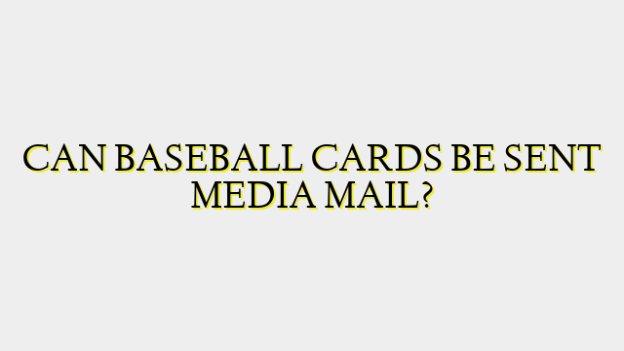The United States Postal Service offers a special media mail class that allows for cheaper shipping rates on certain items related to education like books, recordings, and printed music. Many baseball card collectors wonder if they can take advantage of these lower media mail rates when shipping their baseball card collections and purchases. The answer is that while baseball cards themselves may seem related to sports and collecting, USPS has specific restrictions on what can be sent via media mail that prevent using it for most baseball card shipments.
To qualify for media mail rates, the items being shipped must meet certain criteria outlined by the USPS domestic mail manual. The primary qualification is that the contents must be considered educational materials. Things like textbooks, printed educational materials, educational audio and video recordings, Educational CDs and DVDs, printed music, printed test materials, and other educational content in a printed format qualify. For baseball cards to be considered educational, they would need to provide factual instructional content beyond just visual depictions of players and teams. Things like informational baseball history books or analysis publications with in-depth statistical and strategic breakdowns may qualify, but individual baseball cards depicting just a player photo and stats would not count as educational content on their own merits.
In addition to being educational in nature, media mail shipments are also restricted to a specific list of approved formats outlined by USPS. This includes physical formats like printed paper, bound books, printed music, films, sound recordings, and like educational material in a printed format. Loose items or individual pieces not bound together in some approved format would not qualify. So even if baseball card collections had supplemental educational information, individual loose cards not bound together wouldn’t meet this format qualification.
The USPS domestic mail manual also specifies that media mail can’t be used for any items intended for personal financial gain, commercial use, or resale. Since the vast majority of baseball card shipments involve buying, selling or trading collections for monetary value, this restricts their eligibility as well. Media mail is meant for non-commercial distribution of educational materials only.
Establishing that baseball cards on their own don’t meet the strict criteria for content or eligible shipping formats, the USPS takes the position that baseball cards should not be sent using media mail rates, even if they have some tangential connection to sports history or statistics. A 2015 statement directly addressed this issue: “Baseball cards themselves, whether they include statistical information or not, do not qualify for Media Mail rates because their purpose is to depict baseball players, not to educate.”
On rare occasions, the USPS has made exceptions if a baseball card shipment demonstrated clear educational value above memorabilia or collectible status. For example, if cards were sent as reference material alongside in-depth educational textbooks, publications or other supplemental printed studies on baseball history topics. But individual loose cards or collections intended just for collecting or trading would still be prohibited from media mail rates according to established policy.
While baseball cards reference sports topics many find interesting to learn about, the USPS shipping restrictions for media mail are very clear that collections of individual baseball cards are not eligible for those discounted rates since they don’t meet the criteria of being educational content in an approved physical format, and are almost always intended for financial trade or personal enjoyment rather than education distribution alone. Sending baseball cards as media mail hoping to avoid higher parcel postage rates would be against the rules and could result in extra shipping fees or return of the misclassified packages to the sender. Proper postage using first class mail, priority mail or parcel shipments must be paid instead for any baseball card mailing needs.
So in conclusion, due to the strict USPS definitions for content, format and purpose qualifications, individual baseball cards or card collections shipped on their own cannot legally be sent using discounted media mail rates, even though they reference educational sports topics. Only in very rare cases with substantial supplemental educational materials could an argument potentially be made, but as a general rule collectors should use proper parcel or package postage for all baseball card shipments between buyers, sellers and traders. Following the media mail rules protects the intended pricing structure and prevents misuse of the educational shipping class.


